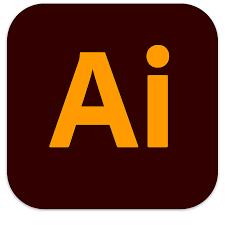How We Revived 'Stress to Strength'’s Branding | Case Study
- BOBz

- May 22, 2024
- 3 min read
Updated: Jul 4
Challenge: | Stress to Strength was started by a burnout coach who wanted to rejuvenate her practice to better represent who she is, what she stands for and how she helps people. |
Solution: | We developed a new logo, branding, brand guide, Canva templates and PowerPoint templates so that she could get up and running, as well as some branding materials for her to use in her day-to-day practice. |
Meet Natasha! She is a burnout coach who took the plunge and started her own practice. Of course, her strengths lie in helping people. She didn't have the time to think about creating her own logo or picking out her brand's colours. That's where we came in. After we were done, Natasha left with a fresh logo that felt authentic to her, a brand guide, and all the templates she needed to get started.
All about Stress to Strength
After recovering from burnout herself, Natasha was ignited with a passion to help others recover from it as well. More specifically, she wanted to help mothers struggling to balance their work and home life. After training and getting certified to become a burnout coach, she was ready to open her own practice: Stress to Strength.
At BRANDz Creatives, our goal was to represent the passion and expertise behind Stress to Strength, as well as give the branding a feeling of peace, representing the journey towards recovery. While she does take some influence from Eastern practices, this isn't the focus of her courses, so we didn't focus on that aspect either.
For this project, we worked with Rich Armstrong, who set up the website for Stress to Strength. This was a great collaboration because Rich is a website developer who understands branding, creativity and visual identity. This made our work on Stress to Strength go all the more smoothly.
The Logo-Making Process
The process always starts with sitting down with the client and learning everything there is to know about their needs. Our main goal was:
to get to know Natasha on an interpersonal level,
to understand her company, goals, and intentions,
to write some keywords and ideas, and have a short brainstorming session with everyone to figure out a few possible directions.
The next step was to look at our notes and create a mood board. We put together some visuals and colours we thought could be a good direction to go in. Natasha was drawn to the serene colours we picked out, like the various shades of blue, green, and turquoise. She also mentioned she liked the visual of a phoenix, as a creature that rises from its own ashes. So we made sure to include that in our sketches.


Revisions, revisions, revisions
Ok, we had a general idea of where to go, it was time to get to work. We took 3 different directions and presented Rich and Natasha with 3 logo options.
Interestingly, the logo with the phoenix didn't make the cut. Instead, they chose the option with the window overlooking a winding path. A perfect representation of the client's journey towards recovery! From there, it was revisions, revisions, revisions until everyone was happy with the final version.
The Final Step: The Brand Guide
Alright, we had a logo. How do we develop a brand guide? Luckily, we had already started the snowball effect. After creating the logo, it was only a matter of developing the idea further: we echoed the logo further by developing illustrations, icons, and photographic imagery.
Once we had some visual arsenal in our back pocket, we developed materials that Natasha would need, like Canva templates, PowerPoint templates, documents for invoices and quotes, and course materials. Throughout everything, we kept coming back to our North Star: the original idea for the brand that we always reverted back to.









































Comments